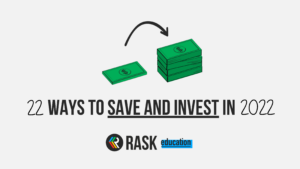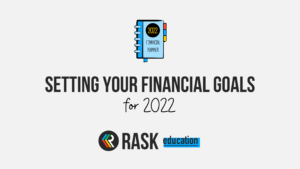A share buy-back is a capital management strategy used by companies to return money to shareholders.
In Australia, a share buy-back occurs when a company decides to repurchase shares from shareholders. These shares are then cancelled, reducing the number of shares on issue.
Share buy-back programs are performed by a company either “on-market” (i.e. on the ASX) or “off-market”. Read on for an example of each.
Proceeds received from those participating in the buy-back will consist of capital and dividend components.
Why do companies buy back their shares?
Companies buy back shares as a form of ‘capital management’. In essence, if a company has surplus capital, it can elect to return this to shareholders through a buy-back. This may be viewed by the company as creating more value for shareholders than simply paying another dividend.
As there are fewer shares on issue, buy-backs can boost metrics such as earnings per share (EPS), which is calculated by dividing profit by the numbers of shares on issue.
All things being equal, a higher EPS will lower a company’s price-earnings ratio – one of the most frequently quoted valuation metrics in the financial community.
Do buy-back programs require shareholder approval?
For both on-market and off-market buy-backs, the company will not require shareholder approval if it will be purchasing less than 10% of the lowest number of shares on issue in the prior 12 months.
If a company would like to purchase more than this amount, shareholders will have the opportunity to vote on the matter.
Off-market vs. on-market buy-backs
An on-market buy-back means the company will purchase shares on the ASX via a broker.
Off-market buy-backs proceed via a tender process, where shareholders are provided with an opportunity to offer a percentage of their shares for sale to the company. Shareholders will receive correspondence advising on a specific price or a range of prices at which the company will consider purchasing their shares.
Do I have to participate in a buy-back?
Participation in a buy-back is entirely voluntary. If you do not want to participate, you can simply disregard the company’s buy-back announcement and carry on.
However, if you sell shares in a company which is completing an on-market buy-back, you may, in fact, be selling your shares back to the company and thus ‘participating’.
How do I participate in a share buy-back?
Participation in an on-market buy-back cannot be guaranteed. This is because you cannot choose who will buy your shares if you sell them via your brokerage account.
However, if you sell shares during the stated buy-back period, there is a possibility the company is buying back your shares.
For off-market buy-backs, you will receive a personalised acceptance form and additional information to help you consider participating in the buy-back. You will be advised by the company to seek professional financial/taxation advice before accepting the offer. This is, of course, completely sensible!
If you wish to participate, you will need to complete the form and nominate how many shares you would like to sell (up to a maximum number advised) and the price you will accept to sell your shares. The company will typically provide a specific price or a price range.
Finally, mail the form back to the share registry via the reply-paid envelope enclosed.
Examples of share buy-backs on the ASX
One of Australia’s largest public companies, biotechnology specialist CSL Limited (ASX: CSL), completed a share buy-back program in recent years. On 12 October 2016, CSL announced it would complete an on-market buyback of up to $500 million worth of its own shares.
CSL stated it would complete the buyback between 27 October 2016 and 25 October 2017 – effectively a one-year period. In early September 2017, CSL announced it had completed the buy-back, and the lowest/highest price it had paid for shares was $91.65/$140 respectively.
Woolworths Group Ltd (ASX: WOW) is another major ASX company that has undertaken a share buy-back program. On 1 April 2019, the supermarket giant announced it would embark upon a $1.7 billion off-market buy-back.
Woolworths’ shareholders were given the opportunity to sell some or all of their shares back to the company at a 10-14% discount price to the market price.
In late May 2019, Woolworths announced the completion of the buyback at a price of $28.94 per share – representing a 14% discount to the market price of Woolworths shares.
The buy-back offer was very popular, with successful eligible shareholders receiving 15.32% of their offered shares bought-back (in excess of the priority allocation of 180 shares).
You might be wondering why shareholders were keen to offload Woolworths shares at a price less than the market price. This is because the buy-back included a significant portion of franking credits, which can offer tax advantages.
To learn more about franking credits, check out Rask Education’s explainer (and video) here.
[ls_content_block id=”27643″ para=”paragraphs”]



